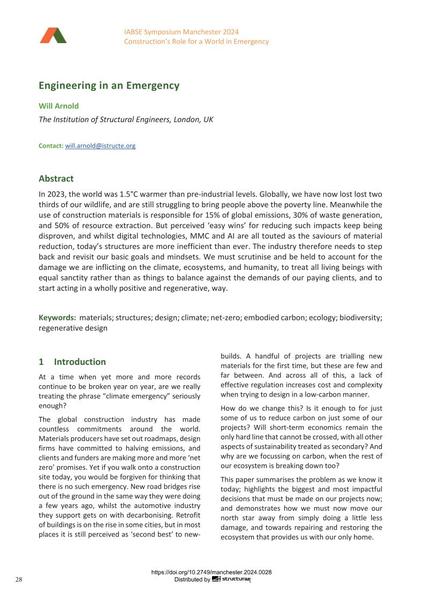Engineering in an Emergency

|
|
|||||||||||
Détails bibliographiques
| Auteur(s): |
Will Arnold
(The Institution of Structural Engineers, London, UK)
|
||||
|---|---|---|---|---|---|
| Médium: | papier de conférence | ||||
| Langue(s): | anglais | ||||
| Conférence: | IABSE Symposium: Construction’s Role for a World in Emergency, Manchester, United Kingdom, 10-14 April 2024 | ||||
| Publié dans: | IABSE Symposium Manchester 2024 | ||||
|
|||||
| Page(s): | 28-36 | ||||
| Nombre total de pages (du PDF): | 9 | ||||
| DOI: | 10.2749/manchester.2024.0028 | ||||
| Abstrait: |
In 2023, the world was 1.5°C warmer than pre-industrial levels. Globally, we have now lost lost two thirds of our wildlife, and are still struggling to bring people above the poverty line. Meanwhile the use of construction materials is responsible for 15% of global emissions, 30% of waste generation, and 50% of resource extraction. But perceived ‘easy wins’ for reducing such impacts keep being disproven, and whilst digital technologies, MMC and AI are all touted as the saviours of material reduction, today’s structures are more inefficient than ever. The industry therefore needs to step back and revisit our basic goals and mindsets. We must scrutinise and be held to account for the damage we are inflicting on the climate, ecosystems, and humanity, to treat all living beings with equal sanctity rather than as things to balance against the demands of our paying clients, and to start acting in a wholly positive and regenerative, way. |
||||
| Mots-clé: |
design structures
|
||||
